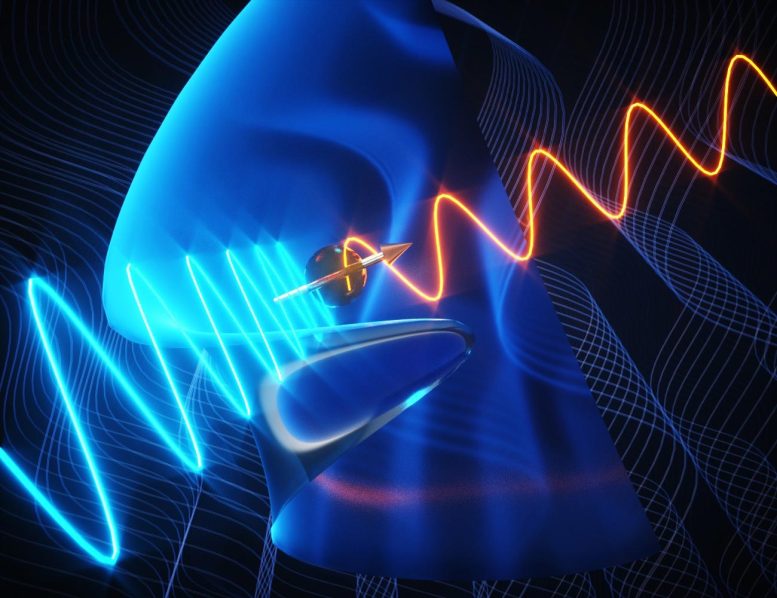
An interdisciplinary team led by Boston College physicists has discovered a new particle – or a previously undetectable quantum excitation – known as the axial Higgs mode, a magnetic relative of the mass-defining Higgs Boson particle, the team reports in the journal Nature. Credit: Nature
Materials that contain the axial Higgs mode could serve as quantum sensors to evaluate other quantum systems and help answer persistent questions in particle physics.
According to the Standard Model of Particle Physics, scientists’ current best theory to describe the most basic building blocks of the universe, particles called quarks (which make up protons and neutrons) and leptons (which include electrons) make up all known matter. Force-carrying particles, which belong to a broader group of bosons, influence the quarks and leptons.
Despite the success of the Standard Model at explaining the universe, it has its limitations. Dark matter and dark energy are two examples, and it is possible that new particles, yet to be discovered, could eventually solve these enigmas.
Today, an interdisciplinary team of scientists led by Boston College physicists announced that they have discovered a new particle – or previously undetectable quantum excitation – known as the axial Higgs mode, a magnetic relative of the mass-defining Higgs Boson particle. The team published their report today (June 8, 2022) in the online edition of the journal Nature.
The detection a decade ago of the long-sought Higgs Boson became central to the understanding of mass. Unlike its parent, axial Higgs mode has a magnetic moment, and that requires a more complex form of the theory to explain its properties, said Boston College Professor of Physics Kenneth Burch, a lead co-author of the report “Axial Higgs Mode Detected by Quantum Pathway Interference in RTe3.”
Theories that predicted the existence of such a mode have been invoked to explain “dark matter,” the nearly invisible material that makes up much of the universe, but only reveals itself via gravity, Burch said.
The Higgs boson is the fundamental particle associated with the Higgs field, a field that gives mass to other fundamental particles such as electrons and quarks. A particle’s mass determines how much it resists changing its speed or position when it encounters a force.
Whereas Higgs Boson was revealed by experiments in a massive particle collider, the team focused on RTe3, or rare-earth tritelluride, a well-studied quantum material that can be examined at room temperature in a “tabletop” experimental format.
“It’s not every day you find a new particle sitting on your tabletop,” Burch said.
RTe3 has properties that mimic the theory that produces the axial Higgs mode, Burch said. But the central challenge in finding Higgs particles in general is their weak coupling to experimental probes, such as beams of light, he said. Similarly, revealing the subtle quantum properties of particles usually requires rather complex experimental setups including enormous magnets and high-powered lasers, while cooling samples to extremely cold temperatures.
The team reports that it overcame these challenges through the unique use of the scattering of light and proper choice of quantum simulator, essentially a material mimicking the desired properties for study.
Specifically, the researchers focused on a compound long known to possess a “charge density wave,” namely a state where electrons self-organize with a density that is periodic in space, Burch said.
The fundamental theory of this wave mimics components of the standard model of particle physics, he added. However, in this case, the charge density wave is quite special, it emerges far above room temperature and involves modulation of both the charge density and the atomic orbits. This allows for the Higgs Boson associated with this charge density wave to have additional components, namely it could be axial, meaning it contains angular momentum.
In order to reveal the subtle nature of this mode, Burch explained that the team used light scattering, where a laser is shined on the material and can change color as well as polarization. The change in color results from the light creating the Higgs Boson in the material, while the polarization is sensitive to the symmetry components of the particle.
In addition, through proper choice of the incident and outgoing polarization, the particle could be created with different components – such as one absent magnetism, or a component pointing up. Exploiting a fundamental aspect of quantum mechanics, they used the fact that for one configuration, these components cancel. However, for a different configuration they add.
“As such, we were able to reveal the hidden magnetic component and prove the discovery of the first axial Higgs mode,” Burch said.
“The detection of the axial Higgs was predicted in high-energy particle physics to explain dark matter,” Burch said. “However, it has never been observed. Its appearance in a condensed matter system was completely surprising and heralds the discovery of a new broken symmetry state that had not been predicted. Unlike the extreme conditions typically required to observe new particles, this was done at room temperature in a tabletop experiment where we achieve quantum control of the mode by just changing the polarization of light.”
Burch said the seemingly accessible and straightforward experimental techniques deployed by the team can be applied to study in other areas.
“Many of these experiments were performed by an undergraduate in my lab,” Burch said. “The approach can be straightforwardly applied to the quantum properties of numerous collective phenomena including modes in superconductors, magnets, ferroelectrics, and charge density waves. Furthermore, we bring the study of quantum interference in materials with correlated and/or topological phases to room temperature overcoming the difficulty of extreme experimental conditions.
In addition to Burch, Boston College co-authors on the report included undergraduate student Grant McNamara, recent doctoral graduate Yiping Wang, and post-doctoral researcher Md Mofazzel Hosen. Wang won the Best Dissertation in Magnetism from the American Physical Society, in part for her work on the project, Burch said.
Burch said it was crucial to draw on the broad range of expertise among researchers from BC, Harvard University, Princeton University, the University of Massachusetts, Amherst, Yale University, University of Washington, and the Chinese Academy of Sciences.
“This shows the power of interdisciplinary efforts in revealing and controlling new phenomena,” Burch said. “It’s not every day you get optics, chemistry, physical theory, materials science and physics together in one work.”
Reference: “Axial Higgs mode detected by quantum pathway interference in RTe3” by Yiping Wang, Ioannis Petrides, Grant McNamara, Md Mofazzel Hosen, Shiming Lei, Yueh-Chun Wu, James L. Hart, Hongyan Lv, Jun Yan, Di Xiao, Judy J. Cha, Prineha Narang, Leslie M. Schoop and Kenneth S. Burch, 8 June 2022, Nature.
DOI: 10.1038/s41586-022-04746-6
Funding: U.S. Department of Energy

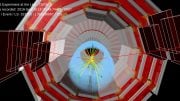
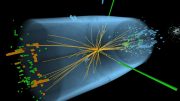
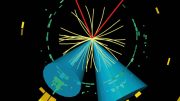
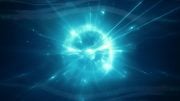
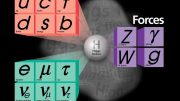
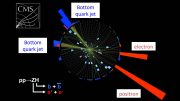
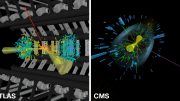
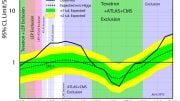
Very interesting.
1. Room temperature detection. Polarized light.
2. Extend thinking to Cold Fusion ?😊😊
3. Can we use polarized Lasers to fuse higher isotopes of Hydrogen to produce Helium and lots of energy?☺️☺️
Views expressed are personal and not binding on anyone.
As a lone lay investigator with unique particular personal insights into nature, human nature and my own defective nature, I’ve held for years that artificial experiments (e.g. Large Hydron Collider) tend to yield artificial results (e.g. creating new particles, not finding them). Now it appears to me that mainstream physics, like mainstream medicine, continues to build enormous houses of cards on such structures. First, the true nature of gravity was misinterpreted and that theory was accepted. Next, double slit experiments were misinterpreted to indicate-for a duality of matter and energy and that theory was accepted. And, now, imaginations and computer simulations are running wild and those new theories are being widely accepted.
Perhaps it’s just my lay lack of access to funding and the physics lab environment but quantum theory still appears to be nothing but ‘smoke and mirrors’ to me, like treating nutritional deficiencies with prescription drugs being good medicine. Meanwhile, I continue to see a very precise and orderly universe with but one big mystery remaining (no, not dark energy or matter) to be solved; what exactly is the oscillating, pulsing or vibrating higher force that, similar to magnetic lines of force in an A-C electric motor, induces gravity to radiate from all natural solid objects, from photons, atoms and molecules to galaxies, with rotation, not dark energy or matter, amplifying the effects of gravity in all rotating solid objects in larger fields of such? I suspect it’s just reverberations of the Big Bang in a big bubble of a universe but I could be wrong, again.
name it the”bos-ton”.
it seems obvious to me there is an Incomprehensible Consciousness as the Source of the Universe / All-That-Is – but where the ‘God’ argument is utterly demolished is when these absolutely deranged animals on Earth (mutant humans) actually believe Source is encased in a male human body and sits on a throne in a place called heaven, ‘unconditionally loving’ all his ‘children’ while simultaneously judging them and depositing those who don’t believe the most absurd fairy-tale ever dreamed up (most of them) into an eternal state of suffering when they die… and ditto with every other religion that says they have the inside info on ‘god’ – an Unknowable Indefinable Ineffable Inscrutable Eternal Infinite Consciousness…
as the first line of the Tao Te Ching states:
the Profound Mystery of the Infinite Eternal Tao cannot be elucidated, even using the name Tao is naming That which inherently can never be named…
Jai Ho All Books Bhagwan ji ki Jai Ho All Physics Bhagwan ji ki 📚📚📚📚📚📚📚📚📚🙏🙏🙏🙏🙏
It is ironic that someone here even commented by citing Chinese Taoism. It is the Taoism that denyed, subjectively without any evidence, that the natural law (i.e. Tao/道 in Chinese) can ever be known! It starts as ‘道也道 无常道’ (though there is the law, nonetheless it’s orderless and thus unknowable). That subjective view formed the basis for the Chinese culture as being basically science-less for thousands of years until recently it is realized to be wrong.